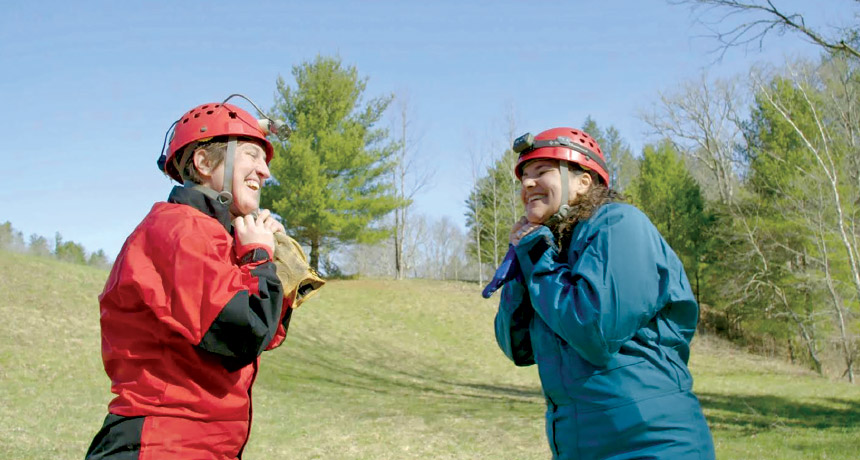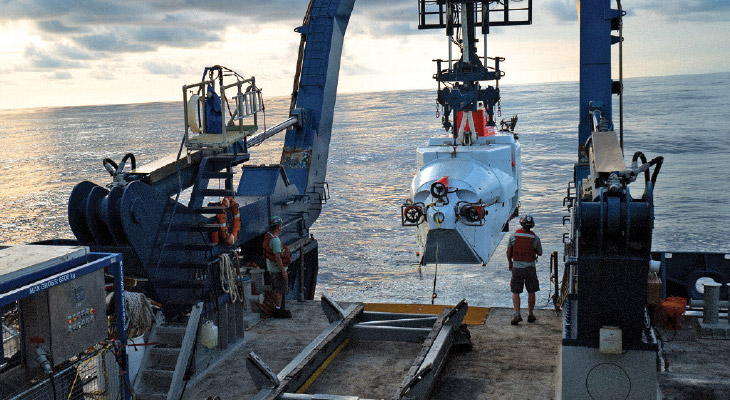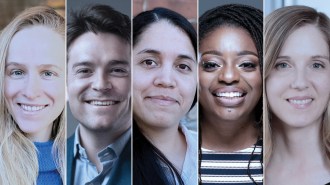Scientists-turned-students guide viewers through ‘The Most Unknown’
Science’s big mysteries are explored in a documentary on Netflix

RESEARCH PARTNERSHIP Microbiologist Jennifer Macalady of Penn State University (left), who studies cave microbes, takes cognitive psychologist Laurie Santos of Yale University (right) spelunking.
Courtesy of Motherboard
When pondering the deepest scientific questions — What is time? What is consciousness? Is there life on other worlds? — it helps to have a knowledgeable guide. But not too knowledgeable.
In The Most Unknown, a documentary now available on Netflix, nine scientists perform a research round robin: Each one visits another from an entirely different discipline. Esteemed experts in their own fields, they each know little to nothing about their partner’s research. That makes the scientists remarkably good interviewers, asking the naïve but probing questions that lead to fascinating discussions. Drawing on their shared experience as scientists, the researchers quickly grasp their colleagues’ work and convey its importance in simple, jargon-free language.
Directed by Ian Cheney, with filmmaker Werner Herzog acting as an adviser, the film weaves together diverse scientific disciplines in sometimes surprising ways. A microbiologist and a particle physicist bond over the different types of dark matter in their two fields. In physics, the term refers to hypothetical particles that interact through gravity but are otherwise mostly inert (SN: 11/12/16, p. 14). In microbiology — which pilfered the term from physics — dark matter refers to the oodles of microbial species thought to exist but which scientists have yet to find and which are expected to vastly outnumber known species (SN: 9/17/16, p. 18).
In keeping with the film’s title, the researchers find common ground in the search for the unknown. All nine of them are plumbing the dark depths at the limits of current human understanding, including the murky workings of the human brain, life on the deep ocean floor and the cosmic mysteries behind the formation of stars.

It’s humanizing to watch the scientists become students: fumbling with unfamiliar concepts and taking part in experiments that put the scientists out of their comfort zones — and that sometimes fail. A physicist learns to shakily control a robotic arm with his brain; a nervous astronomer goes on a deep-sea dive in a submersible; a neuroscientist accustomed to working with humans plies monkeys with grapes.
Pairing up scientists from different fields leads to some delightful insights about how scientific expertise translates — or doesn’t — from one field to another. A physicist who built one of the world’s most accurate atomic clocks, for example, turns out to be surprisingly bad at telling time when subjected to a neuroscientist’s test.
In each partnership, the researchers put their full, wonderful nerdiness on display, expressing reverence for scientific progress of all stripes — and wonder at the mysteries that remain.







